QuestionQUESTION: My Green Anole a couple days ago started having problems eating. She slower than usual when trying to catch a cricket and usually misses. Then when she catches one, it gets away. She has been sleeping more than usual lately, for a couple weeks now. It's not unusual for her to sleep the whole day. When I take her out, she is pretty active.
A little about the tank:
Has Uva and UVB lighting
30 gallon tank
Is sitting in front of a window
average temp is 75-85f
mist the tank 3 times a day
I usually feed her two small crickets a day. I also started a day ago spraying her with a vitamin spray once a day in hoping it would help. I also tried to put the crickets in the refrigerator for a couple minutes to slow them down and she caught it, but then let it fall from her mouth. She had metabolic bone disease a while ago, so I thought she had the beginnings of that. But the UVB doesn't seem to be helping much.
ANSWER: Hi Jessica,
There are a lot of uvb sources out there that are not any good so that may be part of the problem. Also, it can take time for MBD to heal.
Do be careful with her tank in front of a window as that if the sun shines in, it can over heat the tank very quickly. Your warm area isn't quite warm enough. They do require a basking area...which will be under the uvb..this area will also need additional heat source to get the needed basking temperatures. See the care info below. If making any needed corrections in uvb and basking area, she still is slow on catching crickets, you can try breaking the hind legs on the crickets which will prevent them from jumping. You also don't mention her age...Anoles don't have a long life span, generally about 4-6 years with all the proper care and good luck.
I'm going to provide a bit of care info for you. If all the corrections don't work, then I suggest a reptile vet..links are below. Those vitamin sprays really don't work as they can't absorb through their skin. Using a good supplement such as the rep cal brand, dusted on her insects is recommended. Its great to see you have a larger than needed tank!!!!
Adult anole size is up to 9 inches.
Males generally have a larger dewlap than females. Males are larger than females. Males have a brighter, larger red throat,Females MAY keep the stripe down their back. Mature males have a hemipenes bumps on either side of their tail base.I believe anoles are considered mature when they reach about 5 inches snout to tail tip length.
TEMPERATURES:
They need a basking area temperature gradient of 85-93 degrees. These temperatures are needed to properly digest their foods. The basking area is one area of their cage. The overall or ambient temperature of their tank gradient upper 70-s to 80 degrees. 75 degrees for a cool area. Temperatures of 65-75 at night is fine. NEVER use heat rocks or heat caves for Anoles!! They malfunction and will cause death to the anole.
LIGHTING:
Anoles need UVB, which is the special lights that come in fluorescent tubes UVB is needed by the anoles to be able to absorb the calcium in the foods they eat. With out the uvb, they will develop metabolic bone disease.
With the tubes, they must say that they produce BOTH uvb and
uva. The uvb needs to be 5% or higher. Repti Sun 5.0 are
one of the best uvb tubes on the market.The "Iguana light" is the same tube, just different packaging. There is also a reptil sun 10.0 tube that is very very good. The repti glo 8.0's are testing out to be a great uvb source also. The 5.0 and 8.0 need to be positioned 6-8 inches over the anole so
that they get the uvb that is needed. The 10.0 can be 8-10 inches above the Anoles level. The tubes need to be replaced every 6-9 months as that they stop producing uvb long before they stop producing light.
There are tubes that say ''full spectrum'' but they do not produce any uvb.
Do not use the coil lights as that they don't put the uvb in the correct direction for the anole.
For daytime heat, if using the tube uvb, regular household
incandescent lightbulbs produce heat. The wattage will
depend on the size of your anoles enclosure. At night you need to provide a heat source in the form of a ceramic
heat emitter(which can also be used during the day) or a
special nighttime bulb(red or deep purple) that does not
produce any bright white light if the temperatures drop below the recommended night temperatures.
DIET:
Anoles eat daily. They are insectivores. Their food must not be too big for them (no larger than 1/2 the size of their head. All insects that are fed to them must be properly gut loaded for at least 48 hours before feeding them. Crickets, silk worms,trevo worms, wax worms are all part of their varied diet. Many will even eat babyfood fruits and possibly the meats. They are used as treats(once or twice a wk) and are wonderful for hydration. The Gut loading is feeding the insects a nutritious diet prior to feeding the insects to the anoles. This can be accomplished with feeding a recommended "diet" for the insect. ( http://www.anapsid.org/feedingbugs.html ) The crickets can be fed vegetables and cereals. Chicken laying mash is a good choice of food for the crickets as are other commercial foods designed for crickets.Their food needs to be dusted with calcium powder (rep cal calcium with no added phosphorus or vitamin D3 is a good brand) two times a week. Some may eat a bite or two of fruit. A vitamin should be used once a week. Rep Cal Herptivit is a good brand. Be sure to remove any crickets your anole has not eaten after 20 minutes or so to prevent the crickets from nibbling on your anole. Keeping your crickets well fed will help prevent this.
HOUSING:
A 20 gallon tall or larger tank or mesh vivarium is recommended for an Anole. As with almost all reptiles, its best to house them separately. Males can NEVER be housed together as they will fight over territory. Females MAY get along, but doesn't always happen.
Provide several basking branches and plants (silk and plastic)for your Anole. Be sure that all plants and branches are well anchored. For substrate(flooring) the best is plain unprinted newspaper or paper towels... its cheap and easy to clean..and the best part is its safe. Paper towels and lizard carpeting may also be used. Some of the soil mixes are ok to use also.
Stress is the usual cause of an anole turning brown. Stress with them can be caused by incorrect temperatures, other animals that they see, incorrect or no uvb, housing problems (not "natural" enough for them with plenty of plants, etc) housing two males together, (or just two that do not get along)tank not large enough ( for two anoles(male and female or possibly two females)
WATER:
Their water consumption is from dripping leaves. Misting the tank is important. Humidity needs to be in the 60-70 % range. Be sure to provide a small dish of fresh drinking water daily.
This is by no means a complete caresheet on anoles. Please be sure to check out the following link for more in-depth anole care.
http://www.kingsnake.com/anolecare/5.htm
Also, its a good idea to find a Vet before one is actually needed. Reptiles need vets that are trained to treat them. You can find a vet in your area by going to
http://www.anapsid.org/vets/
http://www.arav.org/Directory.htm
---------- FOLLOW-UP ----------
QUESTION: Hey,
Thanks for the information. I decided to throw out the crickets I had and get new ones and she's eating just fine. I guess I had gotten bad crickets?
I have another question about my anole. I used to have a male anole but he passed away about two months ago. They mated quite a bit and my female has been laying eggs. But it takes her a long time to lay them. She laid one yesterday, she damaged it so it's no good now. That was her third egg. I thought she wasn't going to lay anymore since it was well over a month since she laid the last one. I read they are suppose to lay them every 2 weeks or so.
I have a container in the tank filled with soil from the pet store so she has a place to bury them. Is she not comfortable with laying them? Is there a way to encourage her to lay them quicker or is this just the way she is?
AnswerHi Jessica,
Even though they MAY lay 10-20 in a season, doesn't mean they will, especially if she is no longer with the male.
Also, the container does need to be on the warm side of the tank for her to lay the eggs in it. http://www.anapsid.org/anole.html has more info on temperatures and moisture of the egg laying container.
If she is still forming eggs, have you increased her calcium intake? It takes a lot more calcium to form the eggs than when its not egging season. If she is forming eggs, she may not be getting enough calcium to get the eggs to the laying point.Glad to hear she is eating again.

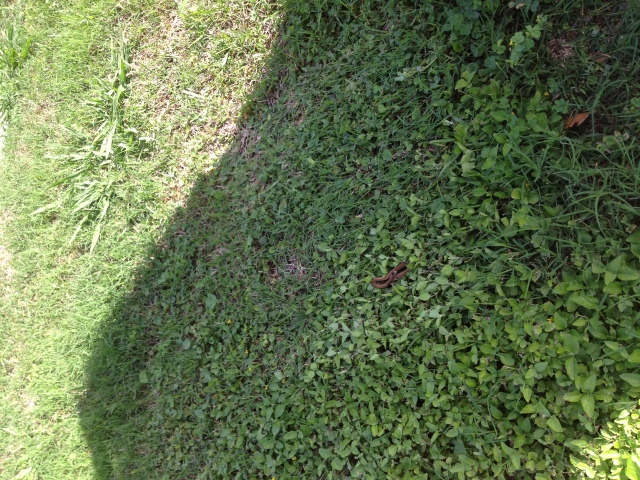 Identify Snake
Question
Identify Snake
Can you identify this sn
Identify Snake
Question
Identify Snake
Can you identify this sn
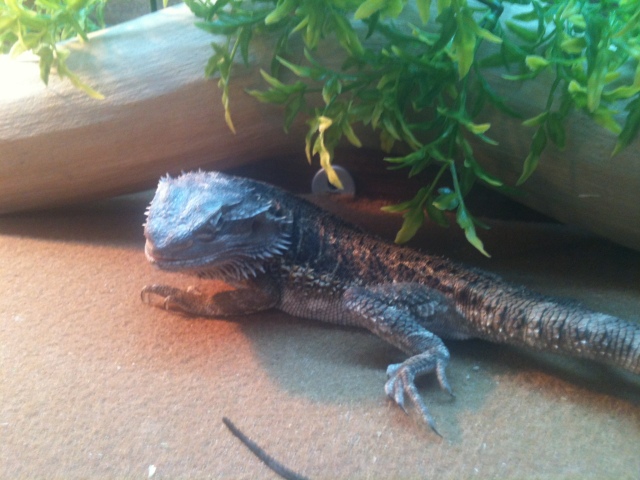 bearded dragon ill
Question
izzy
hi i have ordered a reptisun 10.0
bearded dragon ill
Question
izzy
hi i have ordered a reptisun 10.0
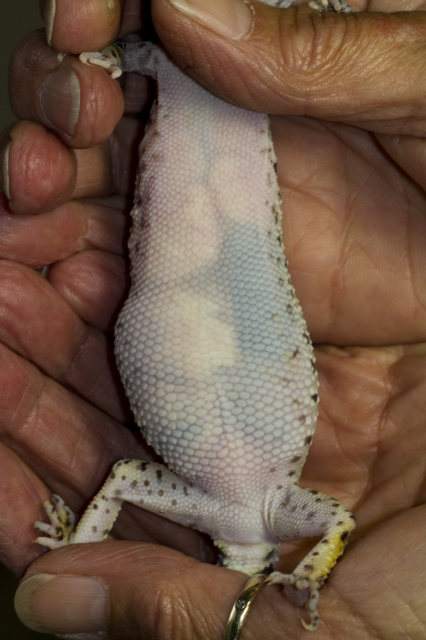 Sick Leoaprd gecko
Question
Belly photo
species - leopard gecko.
h
Sick Leoaprd gecko
Question
Belly photo
species - leopard gecko.
h
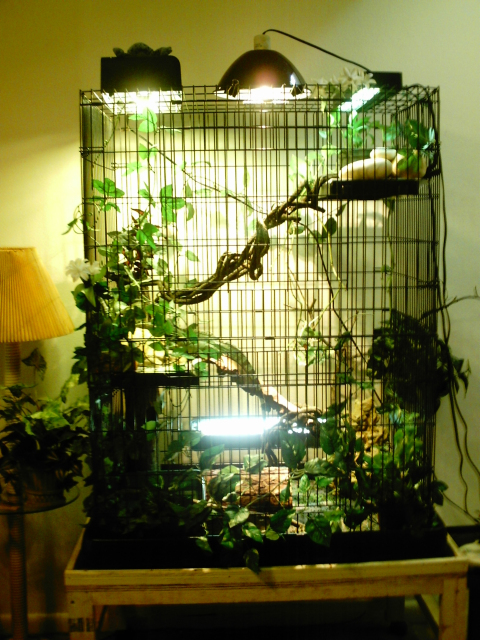 Got a New Puppy - CWD Stopped Eating
Question
Front View
Ive had my male water dragon, Charl
Got a New Puppy - CWD Stopped Eating
Question
Front View
Ive had my male water dragon, Charl
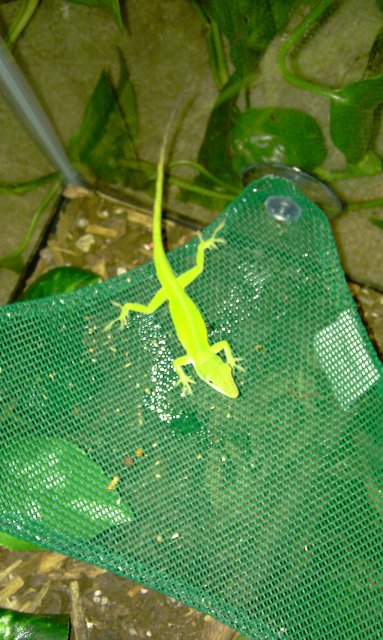 anole
Questionmy anole
QUESTION: my green anole isnt e
anole
Questionmy anole
QUESTION: my green anole isnt e